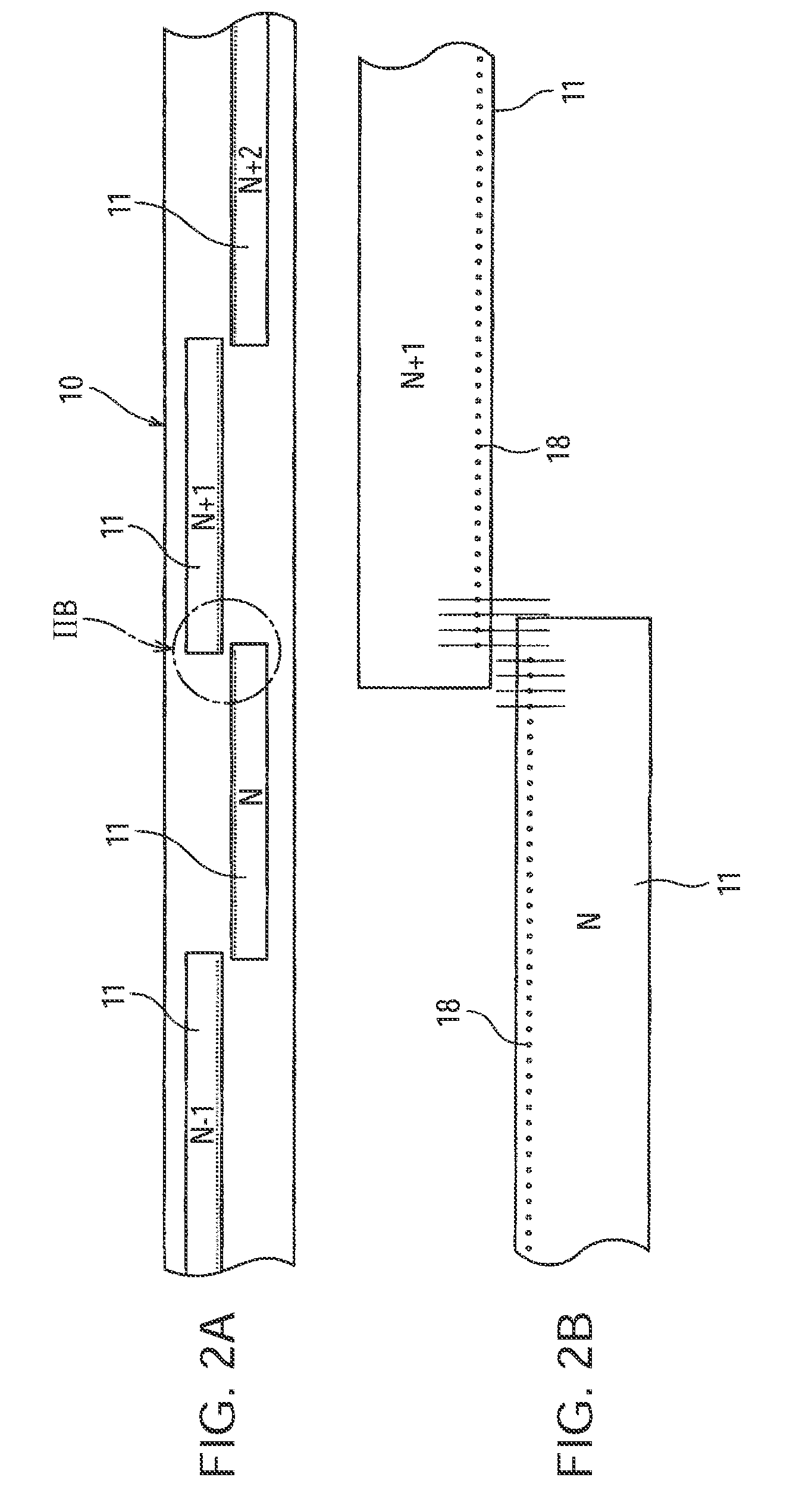Liquid-ejecting head, liquid-ejecting device, liquid-ejecting method, and ejection medium for liquid-ejecting head
a liquid ejection head and liquid ejection technology, which is applied in the field of liquid ejection, can solve the problems of low upper limit of operating temperature range, difference in print density between before and after extended recording, and inability to degrade inkjet heads. achieve stable ejection properties, wide operating temperature range, and suitable viscosity for ejection
- Summary
- Abstract
- Description
- Claims
- Application Information
AI Technical Summary
Benefits of technology
Problems solved by technology
Method used
Image
Examples
Embodiment Construction
[0048]An embodiment of the present invention will now be described with reference to the drawings. In this embodiment, a liquid-ejecting head corresponds to inkjet head units 11 for an inkjet printer, as shown in FIG. 1. In addition, an ejection medium that is ejected by the inkjet head units 11 and is liquid at normal temperature is an ink in this embodiment. Furthermore, liquid cells for containing the ink are ink cells 12, and a trace amount (for example, several picoliters) of ink ejected from nozzles 18 in a droplet form is an ink droplet.
[0049]In this embodiment, the inkjet head units 11 are thermal inkjet head units including heat-generating resistors 13 serving as energy-generating elements. The heat-generating resistors 13 are formed by deposition on a surface of a semiconductor substrate 15 serving as a base member 14. The thermal inkjet head units 11 are arranged along the width of printing paper, as a recording medium, to constitute a thermal line head 10. In this embodi...
PUM
 Login to View More
Login to View More Abstract
Description
Claims
Application Information
 Login to View More
Login to View More - R&D
- Intellectual Property
- Life Sciences
- Materials
- Tech Scout
- Unparalleled Data Quality
- Higher Quality Content
- 60% Fewer Hallucinations
Browse by: Latest US Patents, China's latest patents, Technical Efficacy Thesaurus, Application Domain, Technology Topic, Popular Technical Reports.
© 2025 PatSnap. All rights reserved.Legal|Privacy policy|Modern Slavery Act Transparency Statement|Sitemap|About US| Contact US: help@patsnap.com



